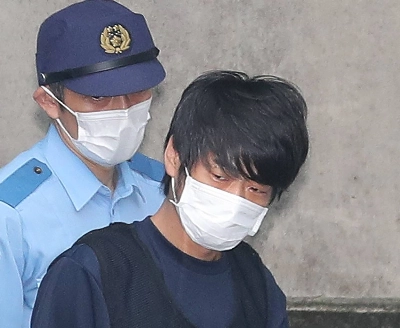Fiction can work like a cheap flight; a good novel takes off, jetting readers to new worlds. Writers and photographers triple the distance traveled. Sean Lotman, 37, an avid reader, writer, photographer and nomad, has logged thousands of kilometers around the world.
Travel fuels Lotman's twin passions — writing and photography. He spends three to six months a year traveling, has explored 36 different countries so far, and enjoys revisiting "intriguing" destinations many times.
He "never has any problem interacting with strangers" and often photographs the many interesting characters he meets along the way, from Costa Rica to Uganda. His fiction and poetry take the reader inside different worlds, from the bustle of modern Casablanca to the mountains of India.
Lotman explains, "I am intellectually captivated by cultural overlaps and collaging. I express that interest in my fiction and in photography, but the medium is always travel. That's how I function, really. I think if I stopped traveling, I would feel closed off. It's my true instinct."
Much of his fiction reveals this instinct. "My writing is usually about Americans in other cultures. When I am traveling, I am often thinking about or interpreting my reactions to a place through an imagined character."
Lotman's interest in photography naturally grew out of his solitary wanders. He often spends weeks in one location, dismissing tour groups or taxis, preferring to explore by foot or public transit. "Eventually, I realized I should preserve these experiences," he says.
Photography also provided a mind-rest from fiction. "I started as a way of relaxing from the intensity needed to compose fiction. Fiction can be overwhelming on an intellectual or spiritual level."
Although he has been writing since university, Lotman admits he only recently developed a personal style in photography, but he's satisfied with his progression. His first photography collection, "Wanderlust," was published two years ago.
Lotman achieves his trademark, surreal colors at a risk. In the modern world of digital, where many photographers have moved on from film cameras, he insists on following old-fashioned style: "I only use analog film cameras, either a 35 mm Nikon or a Diana f+. The color comes out because when you process positive film with negative chemicals it brings out these colors. I only do a little bit of burning or changing the color balance. It is a very risky process because I've taken hundreds of photos which processed out terribly because of the risk inherent, yet I was so happy and confident the moment I shot it."
It is this "serendipity of photography" that attracts Lotman, but he gained something more permanent with photography when he met his future wife in 2005, a fellow photographer, Ariko Inaoka.
Inaoka, an established success both here and overseas, recently stepped into traditional Japan by becoming the 16th generation to take over the family cake and soba (buckwheat noodles) restaurant Honke Owariya in Kyoto. In the history of the centuries-old business started by Inaoka's family in 1465, she became the first woman in the family to take on the duties, while she continues her photography on the side.
Based now in Kyoto with his wife, Lotman was raised in Los Angeles, surrounded by a multitude of cultures: "I grew up with Koreans, Hispanics, Vietnamese; a lot of kids were bussed in from downtown and south L.A. in my schooling, so I have always been comfortable with foreign cultures and foreign people. But I did not travel outside North America until I was in university."
A history major at the University of California, Santa Barbara, he graduated in 1998, wanting only to write fiction. He took an assortment of odd jobs to support his writing, and continued his education by reading: "I've always been an avid reader, history as well as fiction. I am a big fan of Graham Greene, Evelyn Waugh, Norman Rush — writers who have spent a great deal of time abroad and who interpreted those experiences in a narrative format."
Lotman traveled overseas for the first time while in university, and made two subsequent, shoestring budget explorations of Europe. He dreamed of a way to combine his writing with travel.
Five years passed in California, juggling a variety of part-time work while he worked on finishing his first novel. "I had an agent in L.A., a boutique firm specializing in film and fiction. They pitched it to all the big publishing companies with some interest, but nothing officially materialized."
With his writing at a crossroads, Lotman also felt an increasing divide between the America he loved and the America he now observed: "I just didn't feel at home anymore in America. It was 2003, right before the Iraq war started. Even in Southern California, many people were talking with ignorance and reckless ideas about the world. I wanted to confirm there was more out there then violence and hatred."
Unexpectedly, one of his odd jobs — fashion modeling — provided a solution to both quandaries in the form of travel. Deciding he could support his writing with odd jobs in a foreign country, Lotman pursued a sea change: he moved to Japan at the age of 27: "I originally wanted to move to Chile and get my Spanish up to par, but I decided there might be more opportunity to support myself in the fashion world of Asia; luckily, I was right."
Moving to Tokyo in spring 2003, he taught English for three months before he made enough connections to support himself fully with modeling or writing. Over the past few years, he has built up an array of publishers, both online and print, for his short fiction, adding Transit, a popular Japanese travel glossy, which publishes his fiction alongside photographs.
"I am very grateful that I've had the means and the capacity to travel. I know a lot of people who would love to do it, but they don't have the time, the money or the space. I work with Transit and my trips are often sponsored, so I am really lucky." He and his wife often collaborate on assignments.
Just back from three weeks in Vietnam, Lotman has a return to India confirmed for this spring, as well as a visit planned to Taiwan for an exhibition of his and Ariko's works. Writing-wise, he completely revised his first novel and is finishing up a second. His short fiction, book and film reviews appear regularly in a variety of venues around the world, from Brazil to France to the United States.
He also started a haiku/photography project in 2010, "I Do Haiku You," currently only online. "I don't read as much poetry as fiction, but haiku are fleeting and capture a single moment. It's exactly what a photograph does, and I thought they made a natural pair."
In three years, Lotman has penned over 250 haiku matched to his distinctive photos. "I have 80 I am really happy with — both the photo and the poem. I created a demo book, but I am patient to find the right publisher, the right aesthetic taste who is really passionate about the project."
Papua New Guinea, Myanmar, Nepal, Mongolia; Lotman has to stop for a breath before he's halfway through his list of places yet unexplored. "I'm interested in countries where you really let yourself go and your safety zone dissolves. It's that feeling of adaptation coming on, when you feel yourself becoming part of a new environment, part of an unfamiliar tableaux. I like being startled."
At the same time, he admits he'd like to travel more in America: "I haven't done much cross-country wandering, just a train once from L.A. to New Orleans, so I'm keen to see more of the States, too." He trails off, smiling. "There's only so much time. I hope I keep this energy and curiosity into my 70s."
For more information on Lotman's work, see www.seanlotman.com.


















With your current subscription plan you can comment on stories. However, before writing your first comment, please create a display name in the Profile section of your subscriber account page.